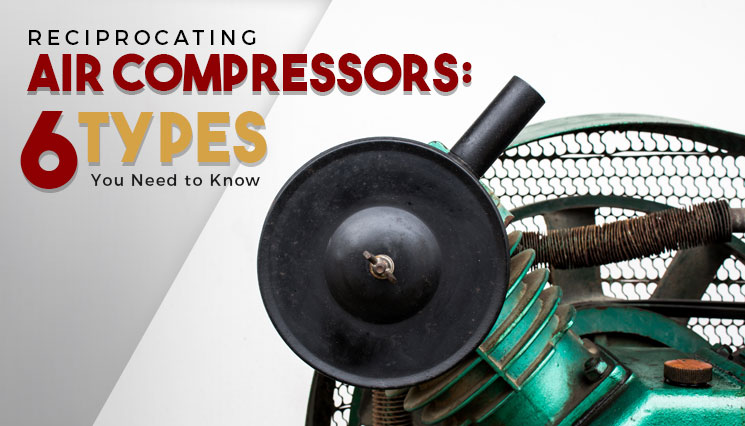In an industry that requires pneumatic operations, a day without an air compressor is hardly imaginable. The fact is, the list of tools that draw power from compressed air is long, and despite being a relatively new innovation, it has been an indispensable apparatus any business can own.
The use of compressed air is not only limited to industries. Through the years, sectors including manufacturing, construction, automotive, welding and painting have also adapted the use of this tool. So, it’s no wonder that there are certain air compressors specifically designed for these purposes, and among these include a reciprocating air compressor.
What is a Reciprocating Air Compressor?
A reciprocating air compressor is one of the two basic types of a positive displacement compressor. It uses a crankshaft-driven piston in a cylinder that’s why it’s also referred to as a piston compressor. There are six common types of this tool and we listed them down in this article:
6 Types of Reciprocating Air Compressors
1. Single-Acting Compressors
The term single-acting in this type of compressor refers to the manner in which the piston on a cylinder works on air. For this type, the air acts only on one side of the piston, while the other end is left free or open. A single-acting compressor comes in a wide range of pressure and capacity. Its versatility makes it a household name in many industries.
2. Double-Acting Compressors
A double-acting compressor is similar to a single-acting, only it has a discharge valve on each side of the cylinder, giving you two compression cycles for every round. This variant is one of the most resilient compressors ever built and used to be the workhorse in many industries. However, due to its inconveniently gigantic size, it was no longer as common as it used to be.
3. Diaphragm Compressors
This variant is also comparable to a single-acting compressor. But, the difference is that the piston controls a membrane that contracts and expands instead of a cylinder. Further, it consists of two chambers in each cylinder – a hydraulic oil chamber and a gas chamber. Its seamless design prevents contamination and leakage which a reciprocating machine is prone to.
4. Tandem Piston Compressors
As the name implies, a tandem piston compressor is an arrangement of two or more pistons on the same rod. It is generally used for double-acting compressors, where one side will serve as the first stage while the other end will be for the final or second stage.
5. V-Shaped Compressors
A V-shaped air compressor, on the other hand is typically an air-cooled compressor with valves mounted on each cylinder unit. Its distinct feature is meant for achieving better torque and balancing by displacing units at some 90 degrees angle. It has higher capacity, therefore cooling is required.
6. In-Line Compressors
In this compressor, the cylinders of various stages are arranged in a straight line when viewed from the top, this structure only clarifies the name of this variant. An in-line compressor is often used in tasks that call for varying pressures. It also runs on electric motors or diesel engines.
Contact Compresstech Today
If you need more information about your options in reciprocating air compressors, Compresstech, a leading provider of air compressor and air tool products in the Philippines, will be happy to assist you. Contact us today!
Did you find this article informative? Let us know by commenting below.
Be updated with the latest news in the compress air industry by bookmarking our blog.

